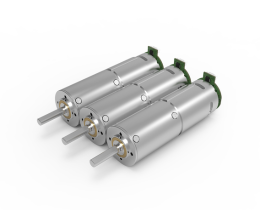When Power Meets Precision: The Quiet Revolution of Gear Reduction Gas Motors
Picture this: a construction site humming with activity. Machines growl, tools clatter, and somewhere in the mix, a motor strains under the weight of uneven loads. Frustration builds—until someone swaps in a gear reduction gas motor. Suddenly, the chaos smooths out. The equipment runs cooler, quieter, and with a steadier rhythm. That’s the magic of engineering done right.
.webp)
At KPOWER, we’ve spent years refining gear reduction gas motors to tackle problems most people don’t even realize they have. Why? Because inefficiency isn’t just annoying—it’s expensive. Imagine a motor that doesn’t just work but adapts. Gear reduction isn’t about brute force; it’s about finesse. By slowing output speed while boosting torque, these motors handle heavy loads without breaking a sweat. Think of it like a marathon runner pacing themselves versus a sprinter gasping after 100 meters. Which one lasts longer?
But wait—how does this actually help you?
Let’s cut through the jargon. Say you’re running equipment that needs consistent power but can’t afford constant downtime. A standard motor might overheat or wear out after months of heavy use. A gear reduction model? It redistributes stress, extends lifespan, and keeps energy waste to a bare minimum. One customer likened it to “swapping a rickety ladder for a steel scaffold—everything just feels solid.”
Here’s the kicker: durability doesn’t have to mean bulky. Modern designs prioritize compact frames without sacrificing performance. One contractor joked, “I almost forgot it was there—until I saw my fuel bills drop.” That’s the KPOWER difference. No flashy gimmicks, just smarter mechanics.
Myth vs. Reality
“Aren’t gear motors slower?” Sure, if speed is your only metric. But what good is speed without control? Gear reduction balances the equation, offering precision where it counts. It’s not about racing—it’s about finishing the job without backtracking.
“Do they really save money long-term?” Let’s break it down. Less vibration means fewer repairs. Efficient torque means less fuel. Add it up, and the numbers speak for themselves. One landscaping company reported a 30% drop in maintenance costs within a year. Not bad for a “simple” motor swap.
KPOWER’s secret? We treat every motor like a puzzle. How do you maximize output without inflating costs? How do you build something tough enough for a quarry but subtle enough for a small workshop? The answer lies in details most overlook: heat-resistant alloys, precision-cut gears, and airflow tweaks that border on obsessive.
Still, specs only tell half the story. What sticks with users is the feel—the absence of that grinding noise, the relief of a machine that starts on the first pull, the quiet confidence of knowing your equipment won’t quit mid-project.
So, next time you hear a motor whine or watch a machine stutter, ask yourself: Is this really the best it can do? Chances are, the answer’s sitting in a KPOWER warehouse, waiting to rewrite the script. Because in the end, reliability isn’t just a feature—it’s a promise. And that’s a promise we’ve built our name on.


































.webp)

